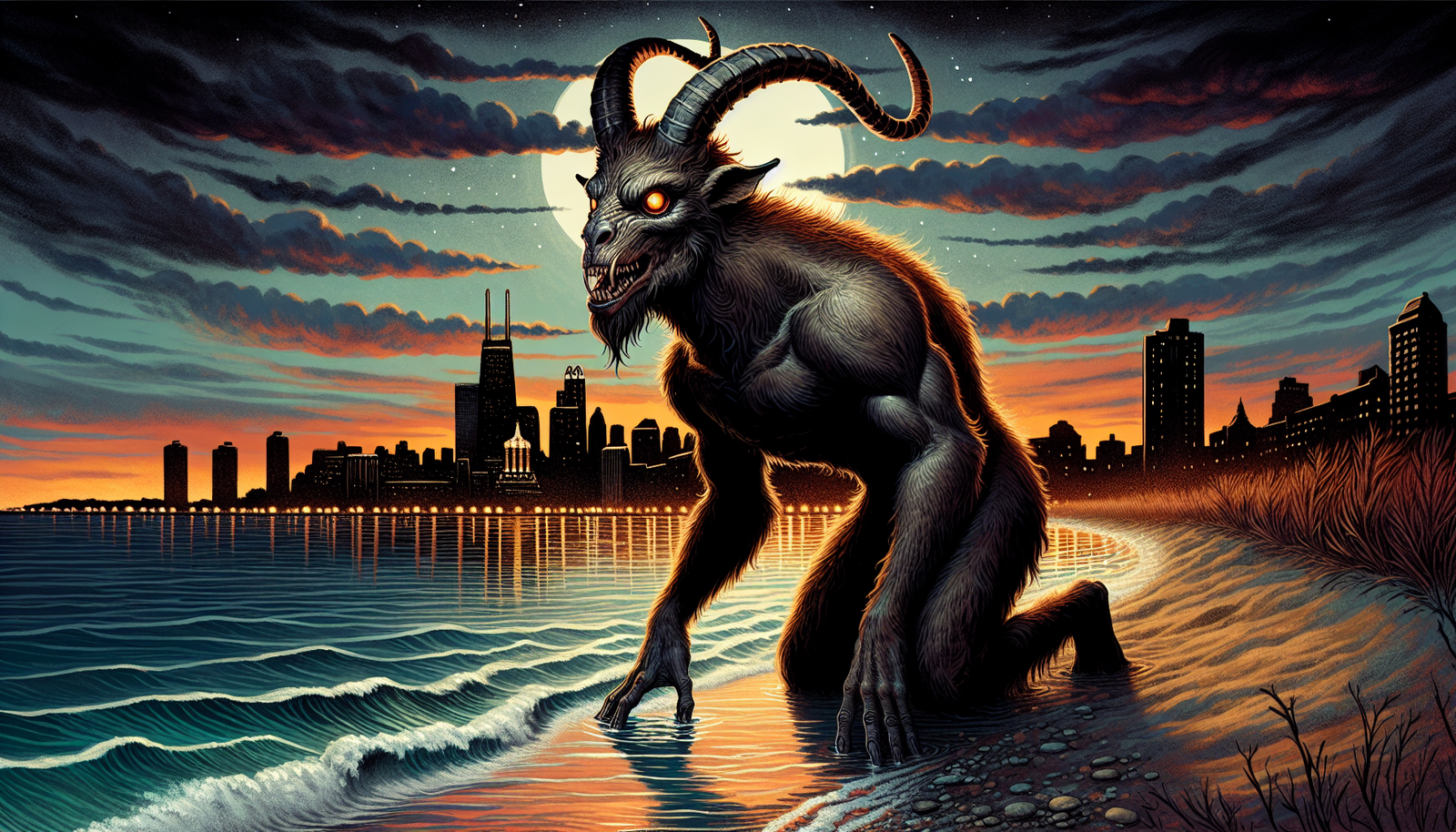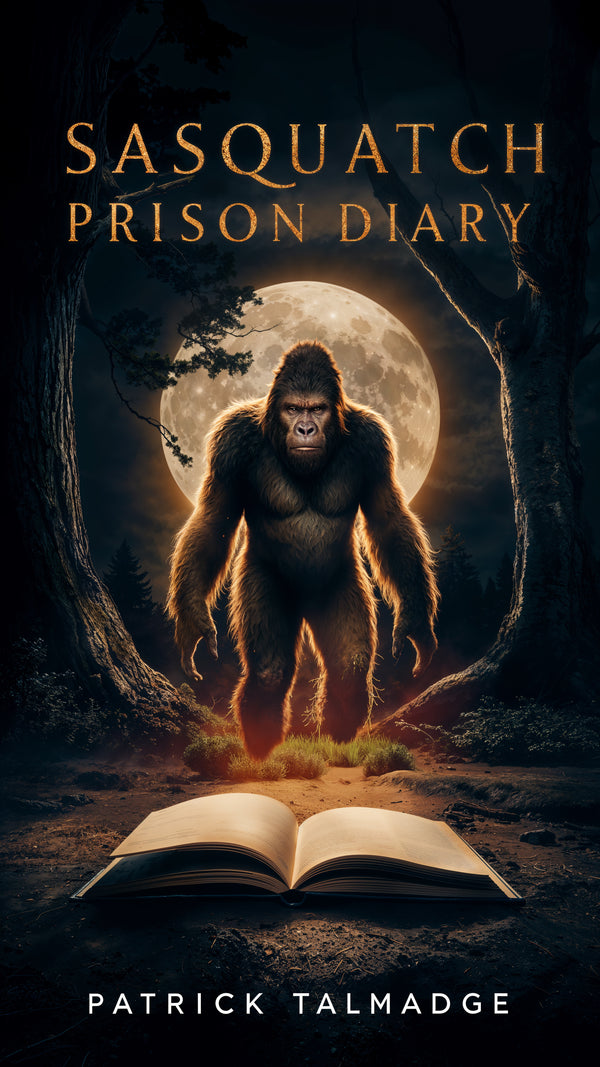Mysteries of Texas Cryptids

By James Roberts, Cryptozoologist and Tour Guide
There's something about the untamed wilderness that calls to the adventurer in all of us. For me, that call has always been loudest in the shadows of the Lone Star State, where legends of strange and mysterious creatures have captured imaginations for generations. As a cryptozoologist and lifelong Texan, I've dedicated my career to stalking these shadows, seeking to unravel the mysteries of the cryptids that haunt our forests, swamps, and mountains.
Texas is a land of wide-open spaces and untold secrets, a place where myth and reality often blur together in the shimmering heat. It's no wonder that this state has become a hotspot for cryptid sightings, with reports of Bigfoot, chupacabras, and other bizarre beasts pouring in from every corner of the state. These creatures have become an integral part of Texas folklore, woven into the very fabric of our cultural identity.
But what is the truth behind these enduring legends? Are Texas cryptids mere figments of overactive imaginations, or could there be more to the story than meets the eye? As someone who has spent countless hours in the field, interviewing eyewitnesses and investigating alleged sightings, I can tell you that the answers are never as simple as they seem.
In this article, we'll embark on a journey into the heart of Texas cryptozoology, exploring the history and lore behind our state's most famous mythical monsters. We'll examine the eyewitness accounts, analyze the evidence, and ponder the possibilities. Whether you're a true believer or a diehard skeptic, there's no denying the power of these legends to captivate and inspire. So grab your hiking boots and your sense of wonder, and let's venture into the shadows together.
The Bigfoot/Sasquatch Enigma
No cryptid has captured the public imagination quite like Bigfoot. This towering, ape-like creature, also known as Sasquatch, has been spotted in forests and mountains across North America, leaving behind a trail of massive footprints and unanswered questions. While Bigfoot sightings have been reported in nearly every state, Texas has emerged as a particular hotspot for encounters with this elusive beast.
The eastern part of the state, with its dense pine forests and sprawling wilderness areas, has been a magnet for Bigfoot activity. The Texas Bigfoot Research Center, an organization dedicated to investigating and documenting these encounters, has compiled hundreds of reports from eyewitnesses across the region. These accounts paint a picture of a creature that is both fascinating and terrifying.
Witnesses describe seeing a large, bipedal creature covered in dark hair, with a human-like face and an overpowering, musky odor. Some have heard its eerie howls echoing through the night, while others claim to have found massive footprints left behind in the mud. The consistency of these reports is striking, with many witnesses describing similar features and behaviors.
One of the most compelling aspects of the Texas Bigfoot phenomenon is the sheer volume of sightings concentrated in specific areas. In the Piney Woods region, for example, reports of Bigfoot encounters are so common that some researchers have suggested the possibility of an actual breeding population living deep in the forest. This theory is bolstered by the existence of regional variants like the Caddo Critter and the Sabine Thing, which are said to inhabit the swampy bottomlands along the Louisiana border.
Despite the intriguing nature of these reports, hard evidence of Bigfoot's existence remains frustratingly elusive. While some researchers have put forth hair samples, blurry photographs, and plaster casts of footprints as proof, skeptics argue that such evidence is inconclusive at best. The lack of a body or skeleton, coupled with the improbability of an undiscovered primate species in North America, has led many to dismiss Bigfoot as a myth.
But for those who have encountered this creature firsthand, the experience is all too real. I've spoken with dozens of eyewitnesses over the years, and the emotion in their voices is palpable. They describe feelings of awe, terror, and disbelief, often struggling to put into words what they've seen. For them, Bigfoot is not just a legend, but a living, breathing entity that has forever changed their understanding of the world.
As a cryptozoologist, my job is to approach these reports with an open but critical mind. While I believe that many eyewitnesses are sincere in their accounts, I also recognize the potential for misidentification, hoaxes, and the fallibility of human memory. The search for definitive proof of Bigfoot's existence is ongoing, and until we have that smoking gun, the debate will rage on.
But one thing is certain: the Bigfoot phenomenon has left an indelible mark on Texas culture and folklore. From the Piney Woods to the Big Thicket, the legend of this elusive creature continues to capture our imaginations and fuel our sense of wonder about the mysteries that lurk in the untamed corners of our state.
The Chupacabra Phenomenon
In the 1990s, a new cryptid burst onto the scene, sending shockwaves through the ranching communities of South Texas. The chupacabra, or "goat-sucker" in Spanish, was described as a bizarre, hairless creature with a row of spines down its back and a thirst for blood. Reports of the chupacabra spread like wildfire, with ranchers claiming to have found their livestock drained of blood, with strange puncture wounds on their necks.
The legend of the chupacabra actually originated in Puerto Rico, where similar reports of a blood-sucking predator had been circulating for years. But it wasn't until the creature made its way to Texas that the chupacabra truly captured the public imagination. Sightings of the beast were reported from the Rio Grande Valley to the Hill Country, with each new encounter adding to the growing mythos surrounding this enigmatic creature.
Descriptions of the chupacabra varied, but most eyewitnesses agreed on a few key details. The creature was said to be roughly the size of a small bear, with a hairless, grayish body and a row of sharp spines or quills running down its back. Its face was often described as dog-like, with large, red eyes and a mouth full of sharp fangs. Some even claimed that the chupacabra had wings or could fly, adding to its otherworldly appearance.
As reports of chupacabra attacks continued to mount, ranchers grew increasingly concerned for the safety of their livestock. Many took to sleeping with their guns by their sides, ready to defend their animals at a moment's notice. The fear and hysteria surrounding the chupacabra reached a fever pitch, with some even speculating that the creature was the result of a secret government experiment gone wrong.
In 2007, the chupacabra legend took a bizarre twist when a strange, mummified carcass was discovered on a ranch near the town of Cuero. The animal was hairless and had a elongated snout, leading many to speculate that it was the remains of a genuine chupacabra. DNA tests later revealed that the carcass was likely that of a coyote with severe mange, but for true believers, this only added to the mystery surrounding the creature.
As a cryptozoologist, I've always been fascinated by the chupacabra phenomenon. While I believe that many of the reported attacks can be attributed to natural predators like coyotes or feral dogs, there are some aspects of the legend that defy easy explanation. The consistency of the eyewitness descriptions, coupled with the strange nature of the livestock mutilations, suggests that there may be more to the story than meets the eye.
Some researchers have suggested that the chupacabra could be a previously unknown species of predator, perhaps a rare type of canine or even a surviving relic of the prehistoric past. Others believe that the creature may have a more supernatural origin, pointing to its alleged ability to drain blood and its sometimes bat-like appearance as evidence of a paranormal explanation.
Regardless of its true nature, the chupacabra has left an indelible mark on Texas folklore. The creature has been featured in countless books, movies, and television shows, and has even inspired a popular line of t-shirts and souvenirs. For many Texans, the chupacabra is more than just a legend - it's a symbol of the state's rugged, untamed spirit and a reminder of the mysteries that still lurk in the shadows.
The Lake Worth Monster Hysteria
In the summer of 1969, the quiet suburb of Lake Worth, just outside of Fort Worth, was gripped by a sudden outbreak of monster sightings. Over the course of several weeks, dozens of eyewitnesses reported encountering a strange, goat-like creature that would come to be known as the Lake Worth Monster.
The first sighting occurred on July 10th, when a group of teenagers claimed to have seen a large, hairy creature emerge from the woods near Greer Island, a popular spot for swimming and picnicking. The teens described the creature as standing around seven feet tall, with a goat-like head and a body covered in scales and fur. They claimed that the monster had let out a terrifying screech before disappearing back into the trees.
Over the next few days, more sightings were reported, each one adding to the growing hysteria surrounding the Lake Worth Monster. Eyewitnesses described seeing the creature lurking in the shadows, peering into windows, and even chasing cars down the road. Some claimed that the monster had glowing red eyes and could leap incredible distances, while others reported finding strange, three-toed footprints in the mud near the lake.
As word of the sightings spread, the Lake Worth Monster quickly became a media sensation. Reporters from across the country descended on the small town, eager to get a glimpse of the creature for themselves. Local businesses capitalized on the frenzy, selling t-shirts and souvenirs featuring the monster's likeness. Even the Fort Worth Star-Telegram got in on the action, offering a $5,000 reward for anyone who could capture the creature alive.
But as the days turned into weeks, the sightings began to taper off, and many began to question whether the Lake Worth Monster was real at all. Some speculated that the creature was nothing more than a hoax, perpetrated by local pranksters looking to stir up trouble. Others suggested that the monster may have been a misidentified animal, such as a large ape that had escaped from a nearby zoo.
Despite the skepticism, the legend of the Lake Worth Monster has endured for more than half a century. Today, the creature is celebrated as a quirky piece of local folklore, with annual festivals and events held in its honor. Some even claim that the monster still lurks in the woods around Lake Worth, waiting for the right moment to reveal itself once again.
As a cryptozoologist, I've always been intrigued by the Lake Worth Monster case. While I believe that many of the sightings can be attributed to misidentification or hoaxes, there are some aspects of the story that give me pause. The sheer number of eyewitnesses, coupled with the consistency of their descriptions, suggests that something strange was indeed afoot in Lake Worth that summer.
Some researchers have suggested that the Lake Worth Monster may have been a rare species of primate, perhaps a type of ape or even a surviving population of Bigfoot. Others believe that the creature may have had a more supernatural origin, pointing to its alleged ability to shape-shift and disappear at will as evidence of a paranormal explanation.
Regardless of its true nature, the Lake Worth Monster remains a beloved part of Texas folklore. The creature has inspired countless works of art, literature, and music, and continues to capture the imaginations of people around the world. For many, the Lake Worth Monster is a reminder of the mysteries that still lurk in the shadows, waiting to be discovered by those brave enough to seek them out.
Lesser-Known Texas Cryptids
While Bigfoot, the chupacabra, and the Lake Worth Monster may be the most famous cryptids to call Texas home, they are far from the only ones. The Lone Star State is a veritable menagerie of mythical beasts, with lesser-known creatures lurking in every corner of the state. From the swamps of East Texas to the deserts of the Trans-Pecos, these cryptids are as diverse and fascinating as the landscapes they inhabit.
One of the most intriguing of these lesser-known cryptids is the Converse Werewolf, also known as the Bexar County Wolfman. According to legend, this creature first appeared in the late 1800s, when a rancher near San Antonio sent his bookish son out to hunt a deer. When the boy failed to return home, the rancher organized a search party to look for him. What they found was a scene straight out of a horror movie.
The search party stumbled upon the boy's mutilated body, with a massive, hair-covered creature hunched over it. The creature was described as standing over seven feet tall, with a wolf-like head and razor-sharp claws. The rancher and his men opened fire on the beast, but it managed to escape into the woods, never to be seen again.
Since then, the legend of the Converse Werewolf has been passed down through generations of South Texans. Some believe that the creature was a genuine werewolf, cursed to roam the earth in search of human prey. Others suggest that it may have been a Bigfoot-like creature, drawn to the area by the abundance of game and the remoteness of the terrain.
Another lesser-known Texas cryptid is the lechuza, a shape-shifting witch owl that is said to haunt the borderlands of South Texas. According to Mexican folklore, the lechuza is a woman who has been wronged by a man and has made a pact with the devil to exact her revenge. By day, she appears as a normal woman, but by night, she transforms into a giant owl with the face of a human.
The lechuza is said to prey on men who are out drinking late at night, swooping down from the sky and carrying them off to their doom. Some even believe that the lechuza has the power to control the minds of her victims, luring them to their deaths with her hypnotic gaze. Sightings of the lechuza have been reported throughout South Texas and northern Mexico, with many locals claiming to have seen the creature firsthand.
Perhaps the most bizarre of all the lesser-known Texas cryptids is the Goatman, a satyr-like creature that is said to roam the wilds of North and Central Texas. The Goatman is typically described as having the body of a man and the head and hooves of a goat, with a pair of sharp horns protruding from its forehead. Some even claim that the Goatman has the ability to shape-shift, taking on the form of a normal human in order to lure its prey.
Sightings of the Goatman have been reported throughout Texas, from the dense forests of the Piney Woods to the rugged hills of the Edwards Plateau. Some believe that the creature is a relative of the chupacabra, while others suggest that it may be a descendant of the ancient Greek god Pan. Regardless of its origins, the Goatman is known for its aggressive behavior, with some even claiming that it has attacked cars and people who have ventured too close to its territory.
As a cryptozoologist, I find these lesser-known Texas cryptids to be just as fascinating as their more famous counterparts. While they may not have the same level of mainstream recognition, they are no less intriguing or important to the study of cryptozoology. Each of these creatures represents a unique piece of Texas folklore, a window into the fears, beliefs, and imaginations of the people who have called this state home for generations.
From Bigfoot to UFOs: Hangar 1 Publishing Has You Covered!
Explore Untold Stories: Venture into the world of UFOs, cryptids, Bigfoot, and beyond. Every story is a journey into the extraordinary.
Immersive Book Technology: Experience real videos, sights, and sounds within our books. Its not just reading; its an adventure.



























